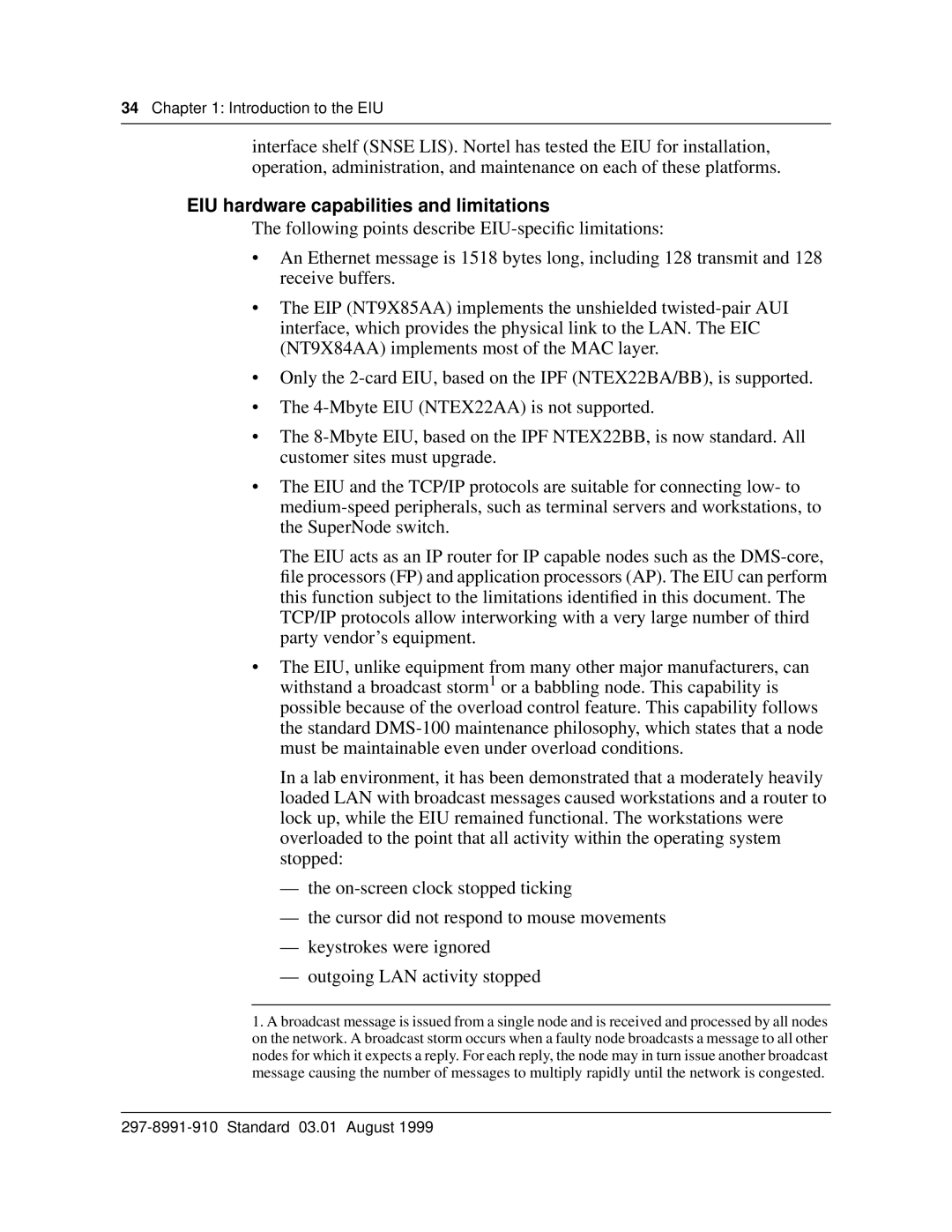
34Chapter 1: Introduction to the EIU
interface shelf (SNSE LIS). Nortel has tested the EIU for installation, operation, administration, and maintenance on each of these platforms.
EIU hardware capabilities and limitations
The following points describe
•An Ethernet message is 1518 bytes long, including 128 transmit and 128 receive buffers.
•The EIP (NT9X85AA) implements the unshielded
•Only the
•The
•The
•The EIU and the TCP/IP protocols are suitable for connecting low- to
The EIU acts as an IP router for IP capable nodes such as the
•The EIU, unlike equipment from many other major manufacturers, can withstand a broadcast storm1 or a babbling node. This capability is possible because of the overload control feature. This capability follows the standard
In a lab environment, it has been demonstrated that a moderately heavily loaded LAN with broadcast messages caused workstations and a router to lock up, while the EIU remained functional. The workstations were overloaded to the point that all activity within the operating system stopped:
—the
—the cursor did not respond to mouse movements
—keystrokes were ignored
—outgoing LAN activity stopped
1.A broadcast message is issued from a single node and is received and processed by all nodes on the network. A broadcast storm occurs when a faulty node broadcasts a message to all other nodes for which it expects a reply. For each reply, the node may in turn issue another broadcast message causing the number of messages to multiply rapidly until the network is congested.
